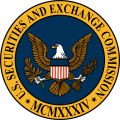
401K TAX CREDITS FOR SMALL BUSINESS OWNERS: SECURE 2.0
It’s clear in the federal government’s most recent round of new legislation that they are intending to help out small business owners. As part of SECURE 2.0 that passed in late December of 2022, there is a focus on small business owners and giving them reasons to implement retirement plans for themselves and their employees.
There are three distinct tax credits that employers can take advantage of that ultimately will make it more cost effective and should positively impact long-term retirement incomes. As a reminder, tax credits reduce your tax obligation, dollar for dollar, as opposed to a deduction that reduces your taxable income.
Start Up Credit
This new start up credit lessens the burden of getting a retirement plan established in the first place. This credit is up to $5,000 per year for businesses with 20+ employees. If the business has less than 20 employees, it can’t exceed $250 per non-highly compensated employee (non HCEs). HCEs are >5% owners in the business at any time during the year or the preceding year OR individuals who received compensation of more than $135k in 2022 and $150k in 2023.
Businesses with more than 50 employees can only claim up to 50% of the qualified startup costs while employers with 50 or less employees, can take advantage up to 100% of the credit.
The costs that are often incurred by starting up a plan include administrative costs charged by a recordkeeper or third-party administrator as well as costs for employee education, which could be charged by the recordkeeper of financial advisor.
This credit can be claimed for three years and you can even elect to take advantage in the preceding year, it elected.
Employer Contribution Tax Credit
This credit allows employers to take up to $1,000 per employee for contributions made to said employees. The employer must have 50 or fewer employees to take the full credit and the employees must make 100k or less. For employers with more than 50 employees, a sliding scale comes into play that reduces the percentage by 2% for each employee over 50.
The entire credit can be taken the first two years and then the percentage of the credit drops to 75% in year 3, 50% in year 4 and 25% in year 5. Any dollar not taken as a credit may be able to be taken as a deduction in those relevant years.
Auto Enrollment Tax Credit
This credit is the most straight forward of any offered credit. It’s a flat $500 for employers with 100 or fewer employees and the only requirement is to adopt an Eligible Automatic Contribution Arrangement to the 401k plan. An Eligible Automatic Contribution Arrangement (or EACA for short) automatically enrolls participants in the plan to contribute a minimum amount to their plan and those participants would have to opt-out if they did not want to contribute that amount. An EACA must start at the beginning of a new plan year and the employer must allow a 30-90 day period that the participant can permissibly withdraw from their account.
These new credits will undoubtedly make it more affordable and cost effective for employers to sponsor retirement plans for their employees. While some of these credits can only be used for a finite number of years, it’s important to remember that all employer contributions and costs associated with running the 401k plan are deductible according to the current tax code (to the extent dollars taken as a credit aren’t also applied to a deduction in the same year).
The benefits to sponsoring a 401k plan include tax deductions for the cost of running the plan, elevated tax deferral opportunities for business owners and their employees compared to Individual Retirement Accounts, and employee acquisition and retention. All of these benefits plus a more lofty goal of helping individuals save for retirement make a 401k plan very attractive.
Reach out to your financial professional or tax professional to see how this could benefit your business and personal retirement outcomes.

